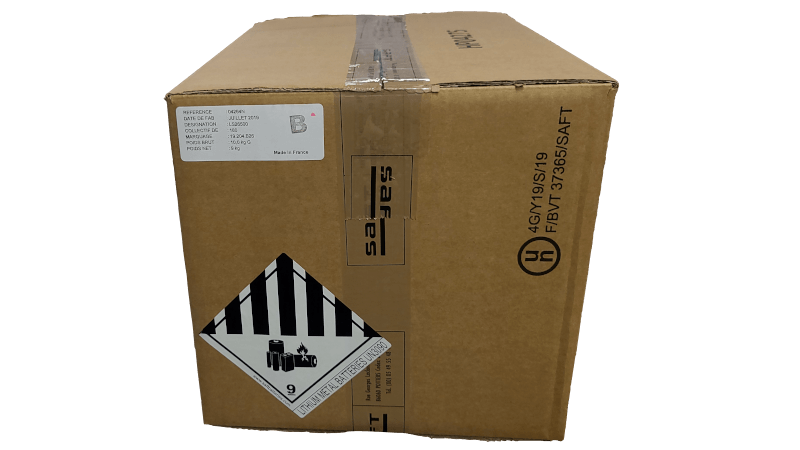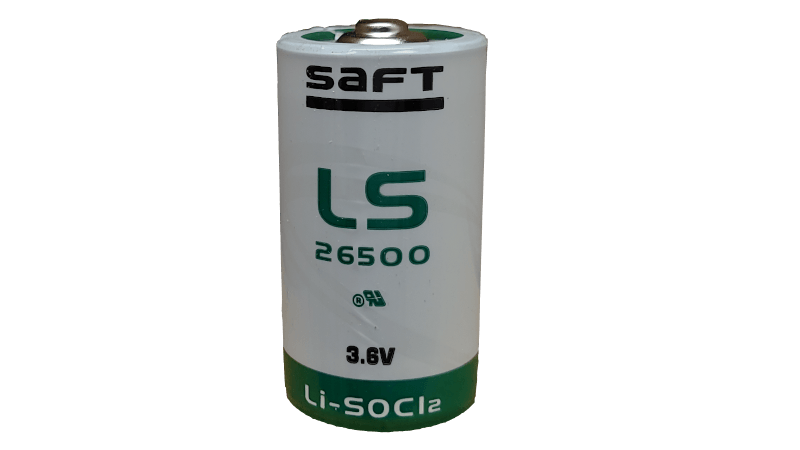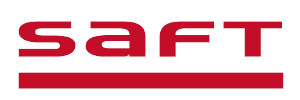


Saft LS26500
SKU: LS26500
Price: $2,520.00 (only $14.00/battery)
Case of 180
Key Features
- High voltage response, stable during most of the lifetime of the application
- Wide operating temperature range (-60°C/+85°C)
- Low self-discharge rate (less than 1 % per year of storage at +20°C)
- Superior resistance to atmospheric corrosion
- Easy integration into compact systems
Physical Construction
- Bobbin construction
- Hermetic construction with glass-to-metal seal
- Stainless steel container and end caps for a low magnetic signature
- Non-flammable electrolyte
- Underwriters Laboratories (UL) Component Recognition
- Compliant with IEC 60086-4 safety standard and IEC 60079-11 intrinsic safety standard
- Restricted for transport (Class 9)
Our Saft LS-26500 Review
Works Great With:
- Utility metering
- Automatic meter readers
- Buoys
- Measuring equipment
- Industrial applications
- Professional electronics
Downloads
Spec Sheet:
Saft LS26500 Specification Sheet
MSDS (Material Safety Data Sheet):
Saft LS26500 Material Safety Data Sheet / Article Information Sheet
Saft Lithium Handbook / Application Manual:
Specifications
Cell Size
C
Voltage
3.6
Capacity
7.7Ah
Cell Construction
Bobbin
Pulse Capability
Typically up to 300mA
Max Continuous Current
150mA
Max Pulse Discharge Rate
0.3A
Dimensions
26.0x50.4mm (1.02x1.98in)
Weight
48g (1.7oz)
Lithium Metal Content
Approx. 2.0g
Termination
Flat Contact (button-top)
Operating Temperature
-60°C to 85°C (-76°F to 185°F)
Storage Temperature
+30°C (+86°F) max
Shelf Life
Saft lithium-thionyl chloride batteries have a low self-discharge rate of less than 1% per year in storage at +20°C). The storage area should be clean, cool, dry and ventilated.
Transportation
Please refer to the Battery Information Sheet / Material Safety Data sheet. Batteries are ARTICLES according to REACH and OSHA and are not required to produce an MSDS.
Warnings
Fire, explosion and burn hazard. Do not recharge, short circuit, crush, disassemble, heat above 100°C (212°F), incinerate, or expose contents to water. Do not solder directly to the cell (use tabbed cell versions instead).